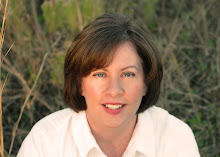Have you heard “let the action unfold on stage” while studying the craft of writing? If not, you have now.
On stage means “on the page.” As you write your story and plot your scenes a critical choice you face is deciding what must happen on stage, and what can happen “behind the scenes.”
I’m going to quote one of my favorite books, “Love Begins with Elle.” When I chose my on stage scenes, I always asked: What is important for the reader to invest in?
No enough on stage action, and the readers don’t care. Too much, and I’ve bogged down the story with every little detail.
The major scenes are easy. Like when the heroine meets the hero, when the heroine is proposed to, when the heroine realizes she’s engaged to the wrong man, when the heroine meets a key character, when the first disaster or heartbreak happens.
But what about the in-between scenes? The linking scenes. Here’s an example.
In “Love Begins with Elle,” the heroine, Elle Garvey, visits her fiance, Jer, in Dallas where he’s recently moved to pastor a large, prosperous church. She’s quickly overwhelmed with his life as a senior pastor. Their goals begingto conflict. Ultimately, they must have a fight that puts the first nail in the coffin of their relatioship. Because Jeremiah is not my story’s hero.
How do I do this? Show the conflicting goals? Should I show her at the church talking with the women who expect her to head up the ladies’ ministry? Do I show her with his family? Do I show her with his football friends? Do I create a Sunday morning scene?
I had to ask myself, what’s my goal as the storyteller? One, show Elle and Jer’s different goals and expectations. Two, show how a pastor’s wife often has expectations on her to work with her husband when perhaps she has goals and dreams of her own. Three, to ultimately have Elle and Jeremiah decide they are not on the same page of life.
Also, I asked, why did Elle travel to Dallas two months before their wedding? Answer, to find a house.
So, that’s where I decided to go.
First, I thought it was important to show Jer with the church, and develop some of Elle’s apprehension. It’s a great place to show their differences.
First scene of Elle in Dallas is at a big church dinner… in her honor. Jer seems to be a very different man, even speaking in a different voice. Do I also show Elle hearing from the women how excited they are for her to take over the ladies’ ministry? Hmm, that could be another scene. Do I need it? More on that later.
Jer also has a surprise for Elle. A big one. She hopes it’s a space for her Dallas art gallery. Instead, it’s the prospect of hosting a TV show together. This is huge for Elle, so I felt it needed it’s own scene. Lots of tension could be developed and more of the separation of goals and expectations.
Finally, I created a house hunting scene. I chose to advance time because at the end of this scene, Elle would half-heartedly suggest not getting married.
I open the scene with two lines of summary how they’d spent seven days house hunting wiht seven days of headache. Opening a scene with a summary paragraph is good once in awhile, but don’t use it often. Like “and so they build a house and moved in.”
Does the house building scene need to be on stage? If you’re doing a lot of summarizing when you start new scenes or chapters, you might be skipping great story points. Remember, conflict and tension are key.
For Elle and Jer, they could not agree on a house. After the two lines of summer, I went to tense dialog and frustration. The scene showed how they are finally facing their huge differences. Elle didn’t want to be on TV, she didn’t want to head the ladies’ ministry (so, that did not need it’s own moment on stage) and she hated the new tract homes Jer loved. She wanted a fixer-upper farmhouse.
Jer wanted all the opposites.
So, those are the moments I decided to put on stage.
I also added one short scene. Kind of like the dramatic ploy of having the character stage right or left on a dark stage with only a spotlight on them. Have you seen those? It’s a personal moment where the character muses (or sings) over her situation.
In Elle’s story, something unique and supernatural happens to her. So, while in Dallas I created a short, short scene to show this supernatural event. No conclusions, no story clues other than this one spectacular thing.
Again, I have to decide when and where these heavenly moments happen. On stage or off?
Hope this helps with deciding what scenes you should have on stage.

Rachel Hauck is the best-selling, award winning author of over 15 novels. Her latest, The Wedding Dress appears in bookstores in April. Rachel serves My Book Therapy as the lead MBT Therapist and excels in assisting aspiring authors to find their story and voice via her one-on-one book coaching.

Comments 3
Excellent, as always. I’m reading The Wedding Dress and savoring the overall plot skill plus memorably beautiful turns of phrase. I know this is one book I’ll read twice. Thanks for the example of your faithful craftsmanship.
This is such a timely blog on scenes! I am thrilled to see that we at MBT have “Ask the Doc” now, with you Rachel.
The decision of ‘On Stage’ &/or ‘Off Stage’ scenes is a new idea for me.
Just clarifying: So the on stage are showing & the off stage are telling/summarizing but also are doing double duty as linking scenes?
Thanks Doc, Very interesting!
Author
Thanks Dee and Janet! I needed this reminder myself.
Rachel